Overview
The article presents 17 compelling career opportunities for life sciences professionals, spotlighting roles such as biomedical engineers, wildlife biologists, epidemiologists, and others, all significantly enhanced by the integration of artificial intelligence (AI).
Furthermore, it elaborates on how AI technologies bolster efficiency and innovation across these fields, thereby highlighting the increasing demand for skilled professionals in a rapidly evolving job market.
This growing intersection of AI and life sciences not only opens new avenues for career advancement but also underscores the critical need for expertise in these dynamic roles.
Introduction
The life sciences field is undergoing rapid evolution, propelled by groundbreaking advancements in technology and an increasing demand for skilled professionals. As this landscape transforms, a myriad of exciting career opportunities emerges, each offering distinct pathways for individuals passionate about health, the environment, and innovation. However, with such a wealth of options available, aspiring professionals may find themselves questioning how to navigate this dynamic terrain and identify roles that align with their interests while promising growth and fulfillment. This article explores 17 compelling careers for life sciences professionals, emphasizing the potential for advancement in an industry increasingly shaped by artificial intelligence and technological integration.
Slickbit: AI Solutions for Life Sciences Career Advancement
Slickbit.ai stands at the forefront of AI innovation, delivering solutions that significantly enhance the productivity and workflows of professionals in careers for life sciences. By harnessing advanced technologies such as predictive analytics and natural language processing, these solutions streamline processes, improve compliance, and foster innovation. This transformation not only elevates individual professional trajectories but also empowers organizations to maintain a competitive edge in an evolving market landscape.
For instance, the deployment of AI agents specifically tailored for regulatory workflows can drastically reduce the time spent on compliance tasks. Consequently, this efficiency allows professionals to redirect their focus toward strategic initiatives that propel their career advancement.
As Jenkins emphasizes, organizations that adeptly integrate team expertise with AI capabilities are poised to shape the future of the industry, underscoring the pivotal role of AI in enhancing careers for life sciences and productivity within the sector.
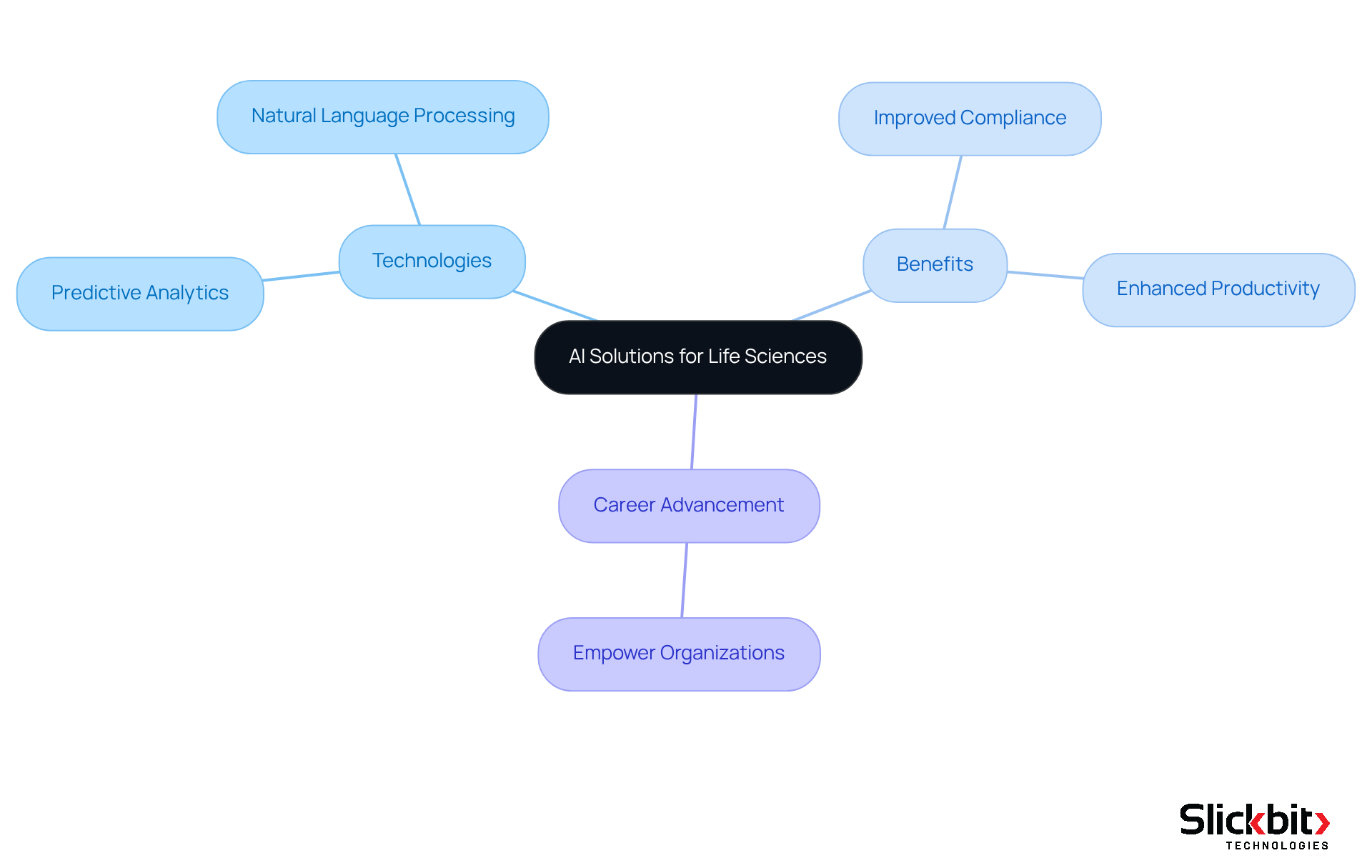
Biomedical Engineer: Innovating Medical Technologies and Devices
Biomedical engineers play a pivotal role in the design and development of medical devices, prosthetics, and diagnostic equipment that greatly enhance patient care. By operating at the intersection of engineering and medicine, they apply principles of biology and materials science to forge innovative solutions tailored to healthcare needs. The integration of artificial intelligence (AI) into this field has transformed the functionality of medical devices, facilitating the incorporation of machine learning algorithms that enable real-time data analysis and improved patient monitoring. For instance, AI-powered wearables, such as the Embrace2 smartwatch by Empatica, have achieved an impressive 100% detection accuracy in clinical trials, delivering continuous health insights that optimize treatment plans and enhance patient outcomes.
The biomedical engineering sector is projected to grow by 5% from 2024 to 2034, with approximately 1,300 job openings anticipated each year. This growth is propelled by the increasing demand for advanced medical technologies and the necessity for professionals adept at navigating the complexities of AI integration in healthcare, all while adhering to stringent medical standards and ensuring reliable functionality under varying conditions. As the industry advances, biomedical engineers will uncover numerous opportunities in careers for life sciences, contributing to healthcare innovation and making it an exhilarating field for those passionate about enhancing patient care through technology. The median annual wage for bioengineers and biomedical engineers was reported as $106,950 in May 2024, further underscoring the financial prospects of this rewarding career.
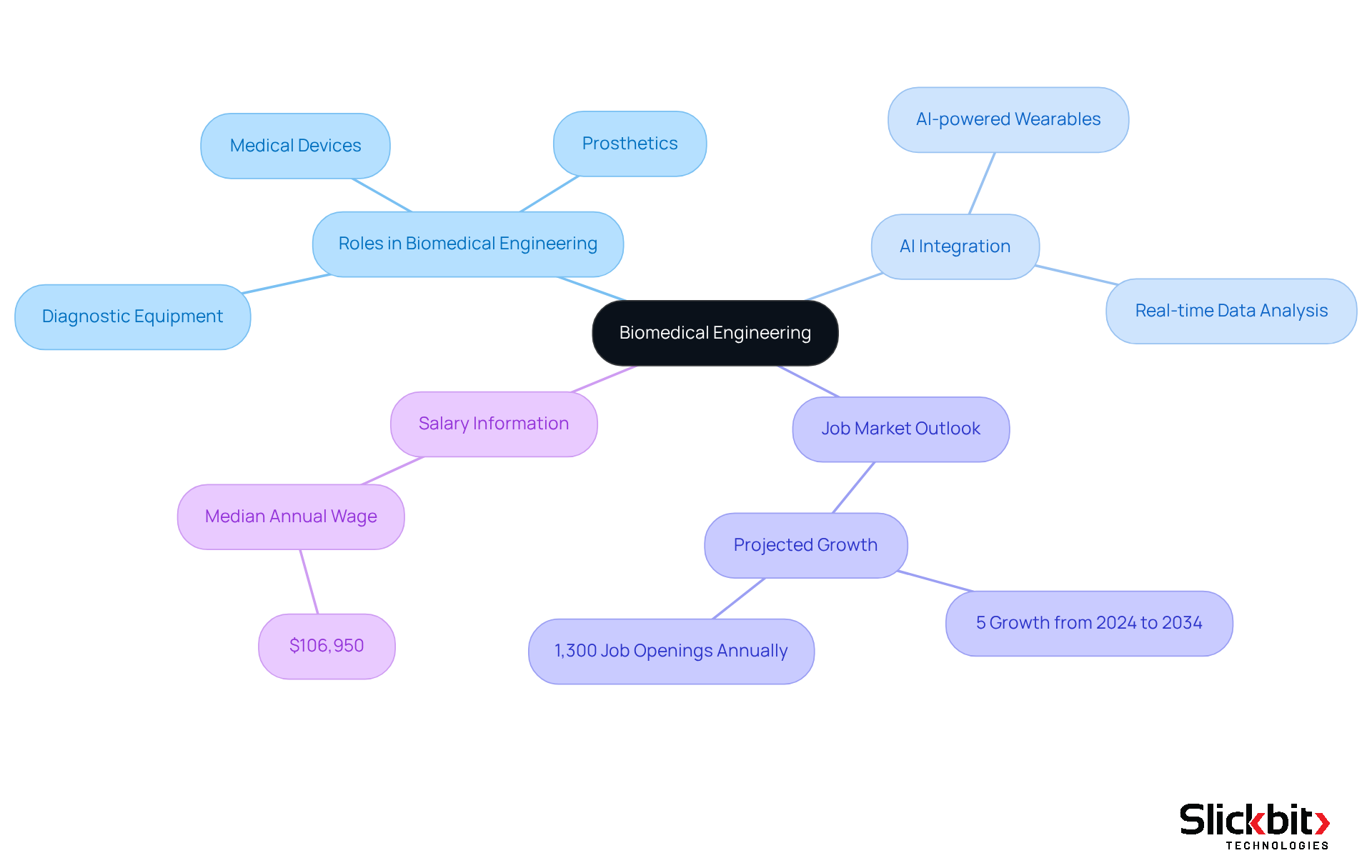
Wildlife Biologist: Researching and Conserving Ecosystems
Wildlife biologists serve a pivotal function in the study of animals and their habitats, concentrating on conservation initiatives designed to protect endangered species and preserve ecosystems. They conduct field research, analyze intricate datasets, and formulate management plans that promote biodiversity. Recent technological advancements, particularly in artificial intelligence and remote sensing, have revolutionized the field, enabling wildlife biologists to gather and analyze information with unparalleled efficiency.
For instance, AI is employed to monitor endangered shark populations by converting images into real-time data, significantly enhancing conservation strategies. As Krysten Schuler from the Cornell Wildlife Health Lab articulates, "This research has tremendous benefits to wildlife agencies. It could revolutionize how we collect data on wildlife."
This career path represents one of the promising careers for life sciences, perfectly suited for individuals who are passionate about nature and dedicated to environmental stewardship, as it merges scientific inquiry with innovative technology to tackle urgent ecological challenges.
Nonetheless, it is crucial to remain cognizant of the environmental impact of AI technologies, as underscored by Ali Swanson, who stresses the importance of transparency regarding these costs. Wildlife biologists can harness AI tools by partnering with technology experts to optimize their conservation efforts and ensure sustainable practices.
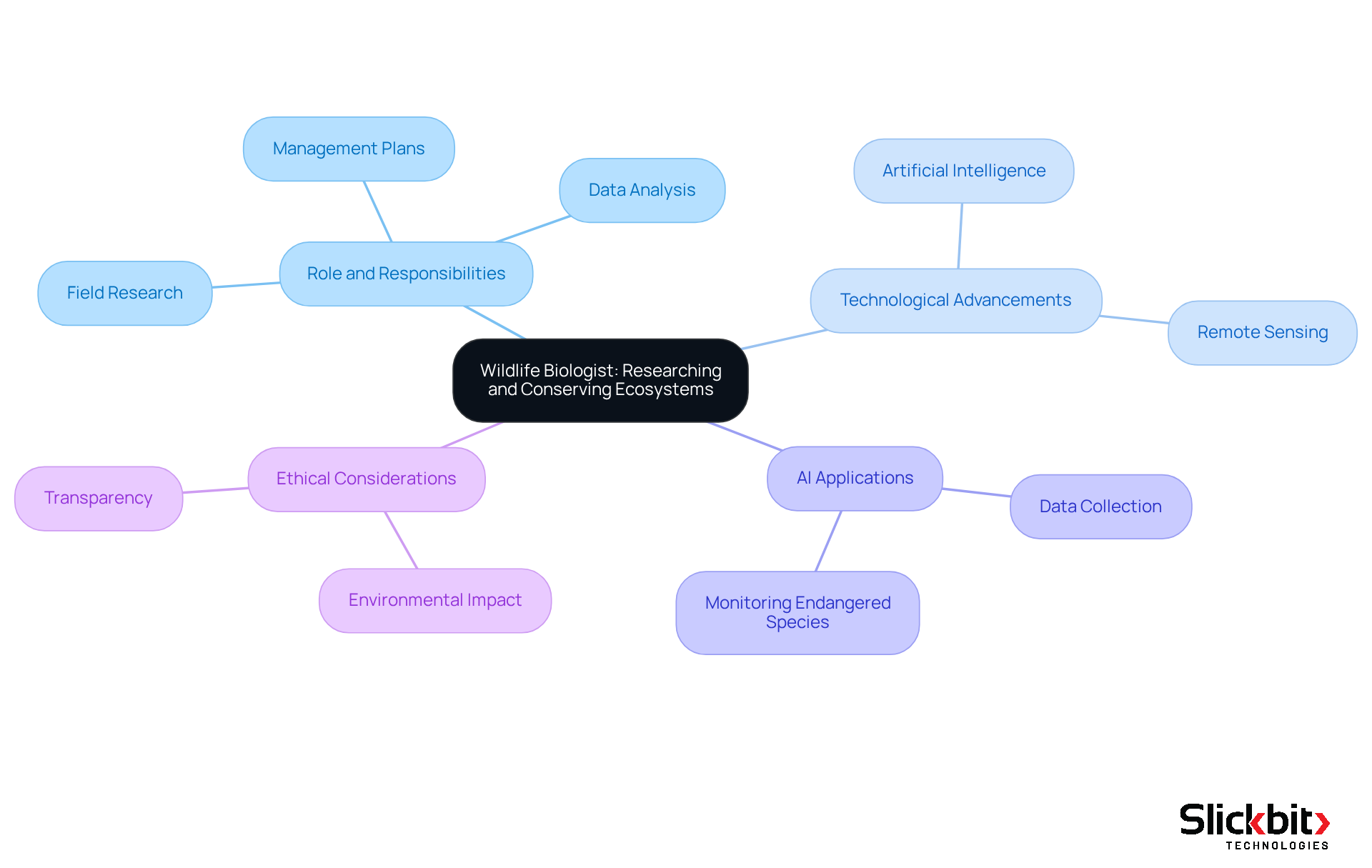
Epidemiologist: Analyzing Disease Trends and Public Health
Epidemiologists play a crucial role in analyzing disease patterns and causes, with the primary objective of reducing risks and enhancing public health outcomes. By meticulously examining data from diverse sources, they identify patterns that inform wellness policies and interventions.
The integration of artificial intelligence into epidemiology significantly amplifies data analysis capabilities, allowing for rapid responses to emerging medical threats. For example, innovative tools like DOLPHIN facilitate the detection of previously undetectable disease markers, while the National Syndromic Surveillance Program harnesses AI for real-time outbreak monitoring.
This dynamic field is witnessing substantial growth, with an expected employment increase of 16 percent for epidemiologists from 2024 to 2034, offering numerous careers for life sciences to those committed to improving community health. Furthermore, the median annual wage for epidemiologists in scientific research and development services was $130,390 as of May 2024, underscoring the financial advantages of pursuing careers for life sciences in this field.
However, candidates should recognize that additional training post-employment is often essential to achieve proficiency in the skills necessary for this profession.
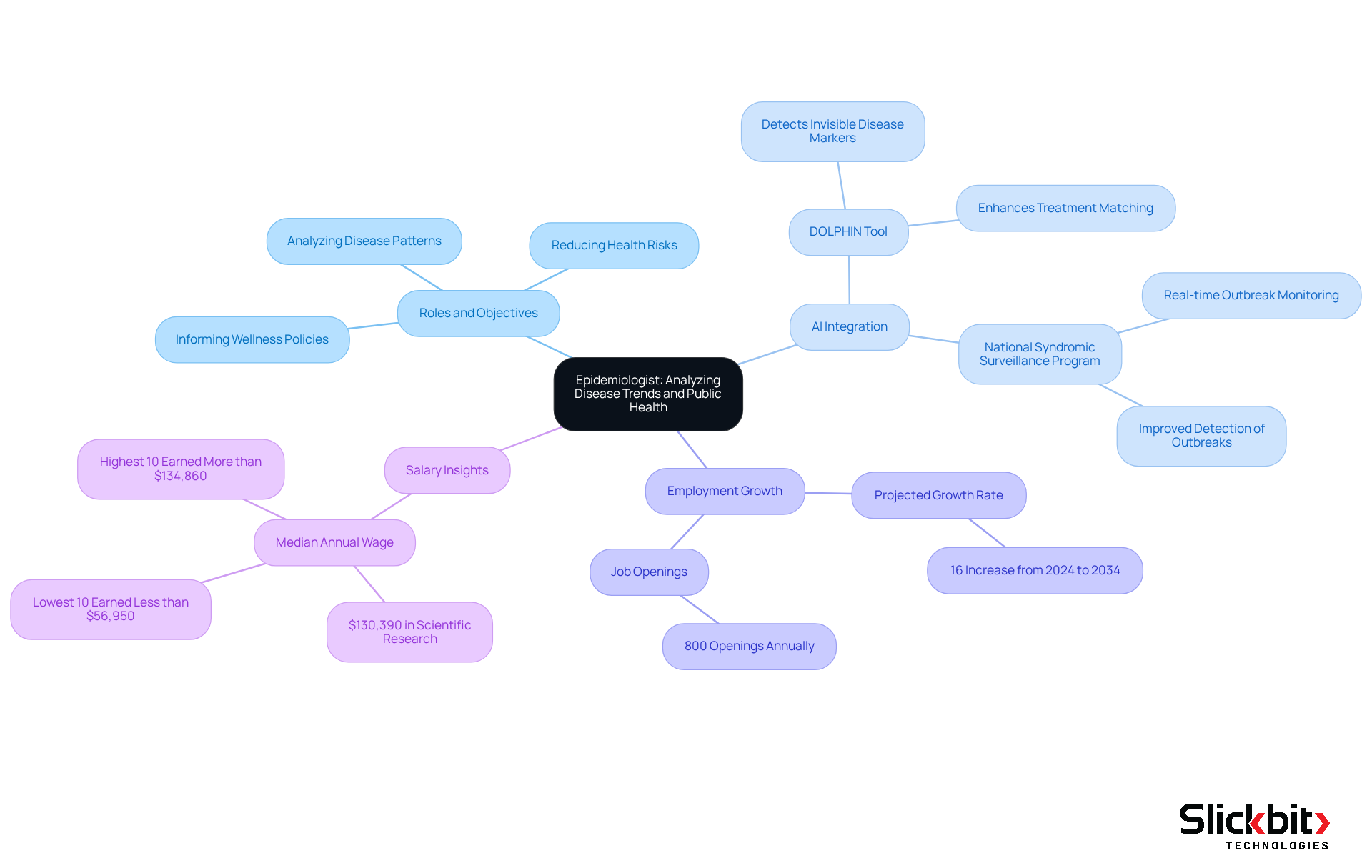
Medical Technologist: Conducting Critical Laboratory Tests
Medical technologists play a vital role in healthcare by conducting laboratory tests essential for diagnosing and treating diseases. They analyze blood, urine, and other bodily fluids using sophisticated laboratory equipment to deliver precise results. The integration of AI into their workflows is revolutionizing the field, significantly enhancing both testing accuracy and efficiency. For instance, AI algorithms can analyze complex datasets, leading to faster diagnoses and improved patient outcomes. As Christopher Garcia, M.D., observes, "AI, conversely, utilizes machine learning algorithms to examine intricate information, delivering quicker and more precise outcomes."
Furthermore, the demand for skilled medical technologists in careers for life sciences is expected to grow, with employment in this field projected to increase by 14 to 18 percent over the next decade. This growth in careers for life sciences is particularly relevant due to the staffing shortages in laboratory fields, which are leading to higher pay and better job options for qualified candidates. Professionals pursuing careers for life sciences can anticipate numerous opportunities for advancement and specialization.
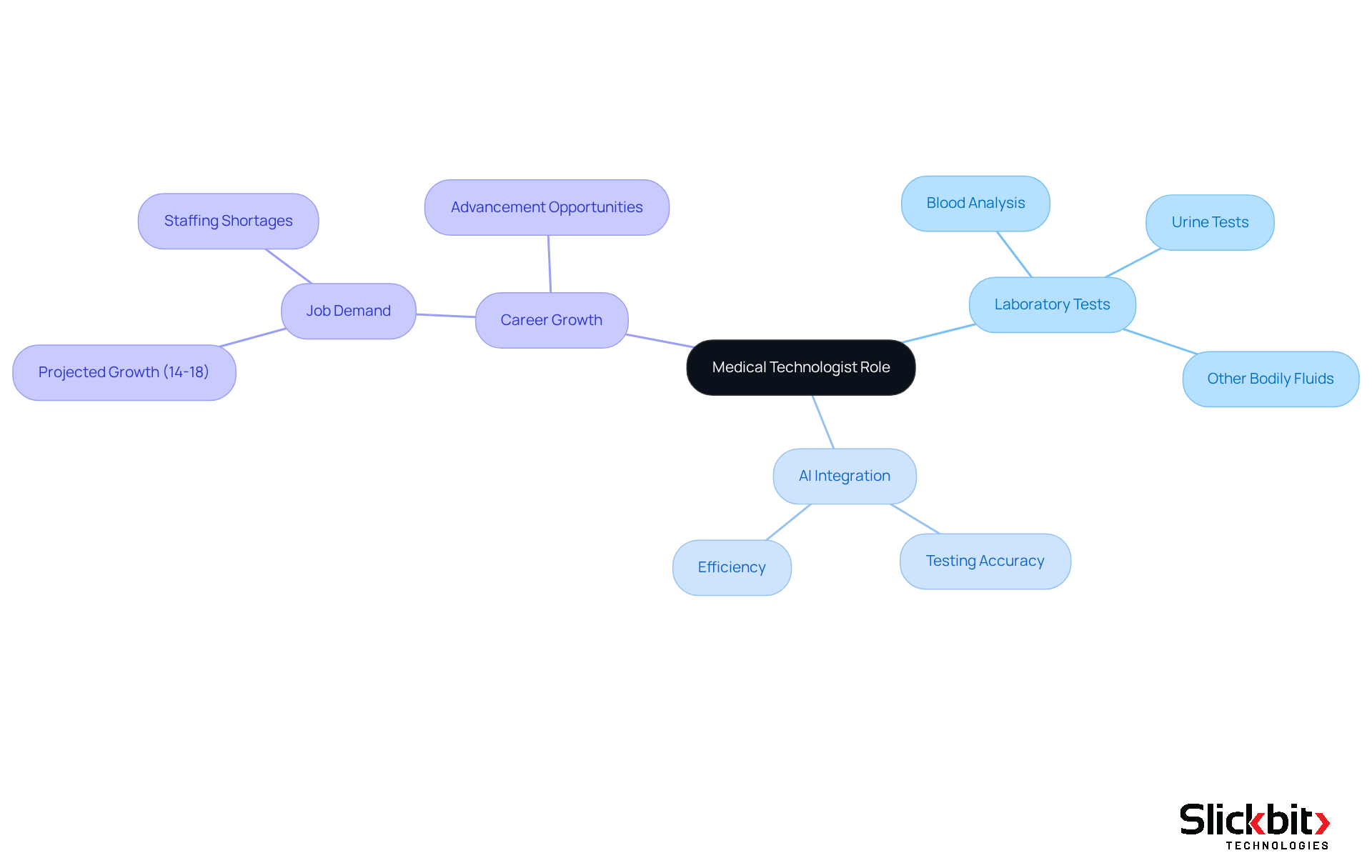
Ecologist: Studying Ecosystems and Biodiversity
Ecologists rigorously investigate the intricate relationships between organisms and their environments, with a keen focus on biodiversity and ecosystem health. Through meticulous field studies, they gather critical information and examine environmental impacts, all aimed at guiding effective conservation initiatives.
The integration of artificial intelligence in ecology—encompassing predictive modeling and data analysis—significantly enhances research capabilities. This advancement empowers ecologists to make informed decisions regarding conservation strategies.
For individuals passionate about environmental protection, this field offers a compelling opportunity to make a meaningful impact.
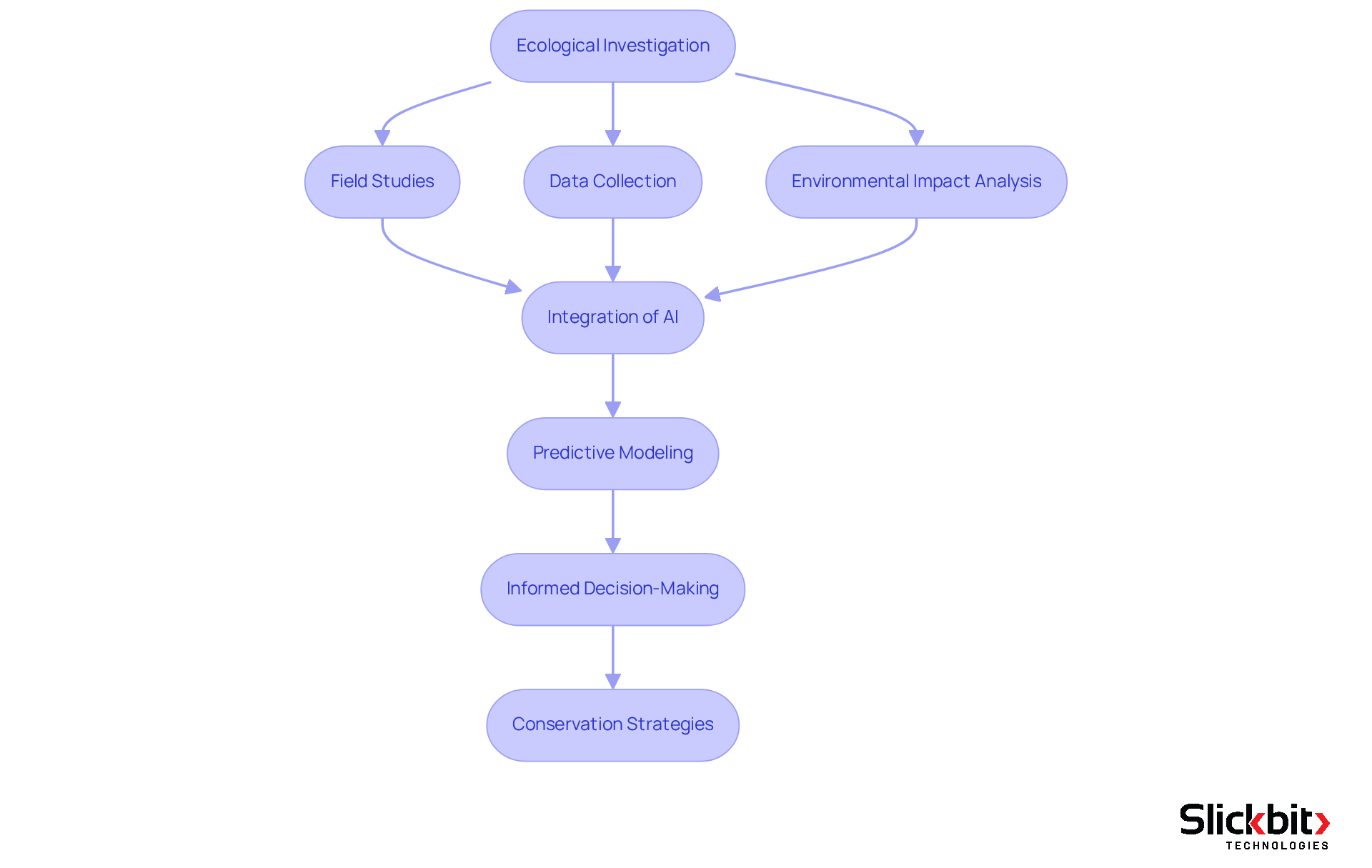
Research Assistant: Supporting Scientific Investigations
Research assistants play a crucial role in supporting scientists by conducting experiments, gathering information, and analyzing results across diverse environments, including laboratories and field settings. The integration of AI tools, such as MultiverSeg, has revolutionized their workflow, significantly simplifying the processes of information gathering and analysis. For instance, AI-powered platforms can automate repetitive tasks, allowing assistants to focus on more complex analytical work. This transformation not only boosts the overall efficiency of scientific investigations but also enhances data accuracy and reduces the time required for project completion. As a result, this position is particularly appealing for those seeking practical experience in research, which can lead to careers for life sciences and opportunities for advancement into higher academic or professional roles.
The demand for skilled support personnel in research is projected to rise by 19% from 2018 to 2028, with approximately 150,300 new positions anticipated over the next decade. Furthermore, the average wage for support assistants is expected to reach $42,896 by 2025, underscoring the importance of flexibility and continuous education in this evolving sector. The combination of these factors highlights the significant role research assistants play in advancing scientific knowledge and the careers for life sciences that are promising in this field.
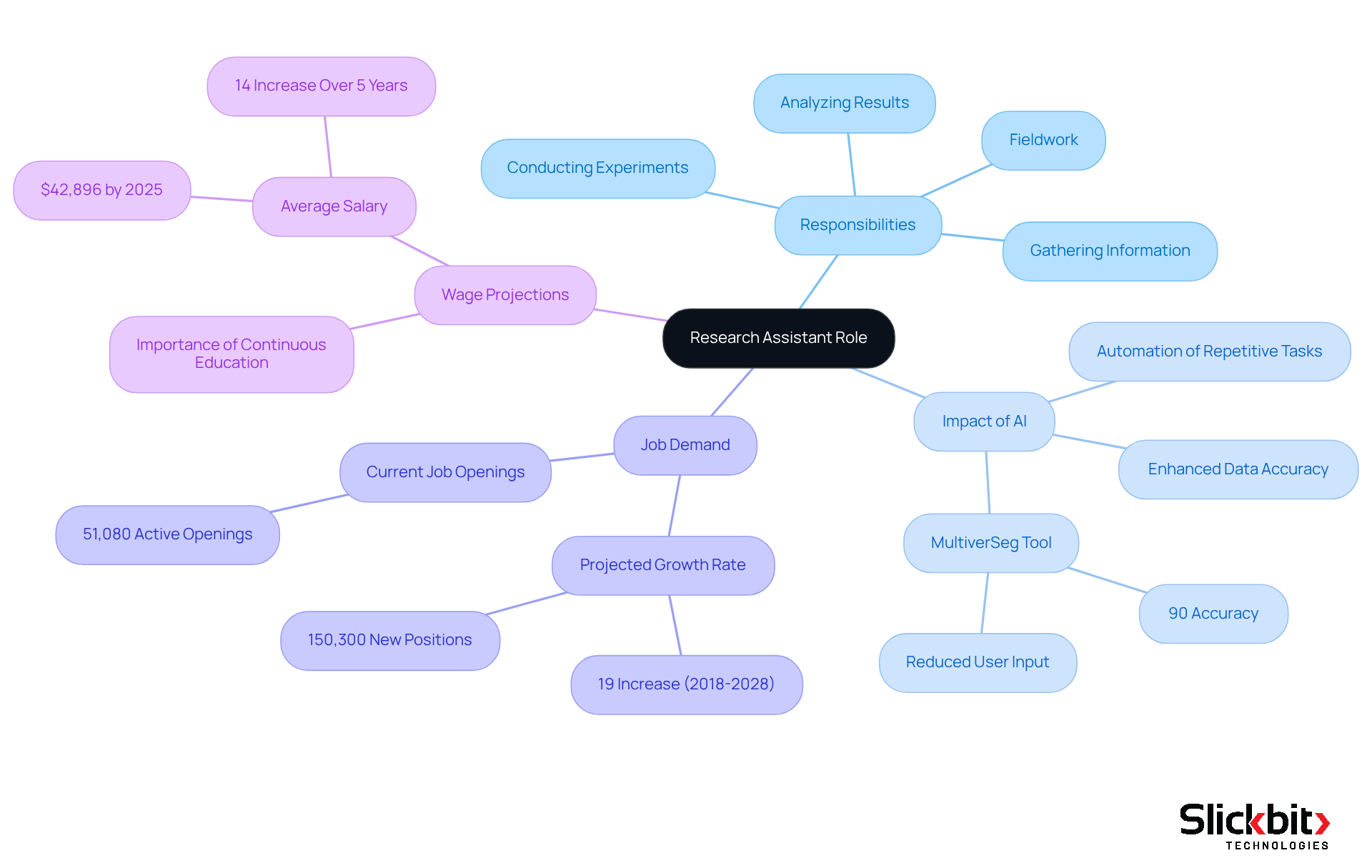
Microbiologist: Exploring the World of Microorganisms
Microbiologists play a crucial role in investigating bacteria, viruses, fungi, and other microorganisms, aiming to uncover their significant contributions to health, disease, and environmental systems. Through rigorous experimentation, sample analysis, and innovative methodologies, they delve into the complexities of these microscopic entities. The integration of artificial intelligence (AI) into microbiology is revolutionizing the field, with applications such as automated data analysis and predictive modeling enhancing both efficiency and precision. For instance, AI has dramatically reduced the cost of mechanism of action studies from $2 million to a mere $60,000, expediting the investigation timeline from two years to just six months.
This career path, particularly in careers for life sciences, offers a multitude of opportunities across healthcare, innovation, and environmental science, as professionals leverage AI to drive advancements in diagnostics and treatment strategies. As the field continues to evolve, microbiologists are increasingly prioritizing risk detection and proactive health management, highlighting the pivotal role of AI in shaping future research outcomes. The urgency for innovative solutions in microbiology is underscored by projections that antibiotic resistance could claim millions of lives annually by mid-century if left unaddressed. Notably, AI-designed proteins are currently being tested to bolster biosecurity measures, exemplifying the practical applications of AI in tackling pressing challenges.
As Khosrow Shotorbani aptly noted, the future of microbiology will necessitate a harmonious balance between traditional methodologies and emerging technologies. This evolution emphasizes the imperative for microbiologists to adapt to these changes, ensuring they remain at the forefront of scientific advancement.
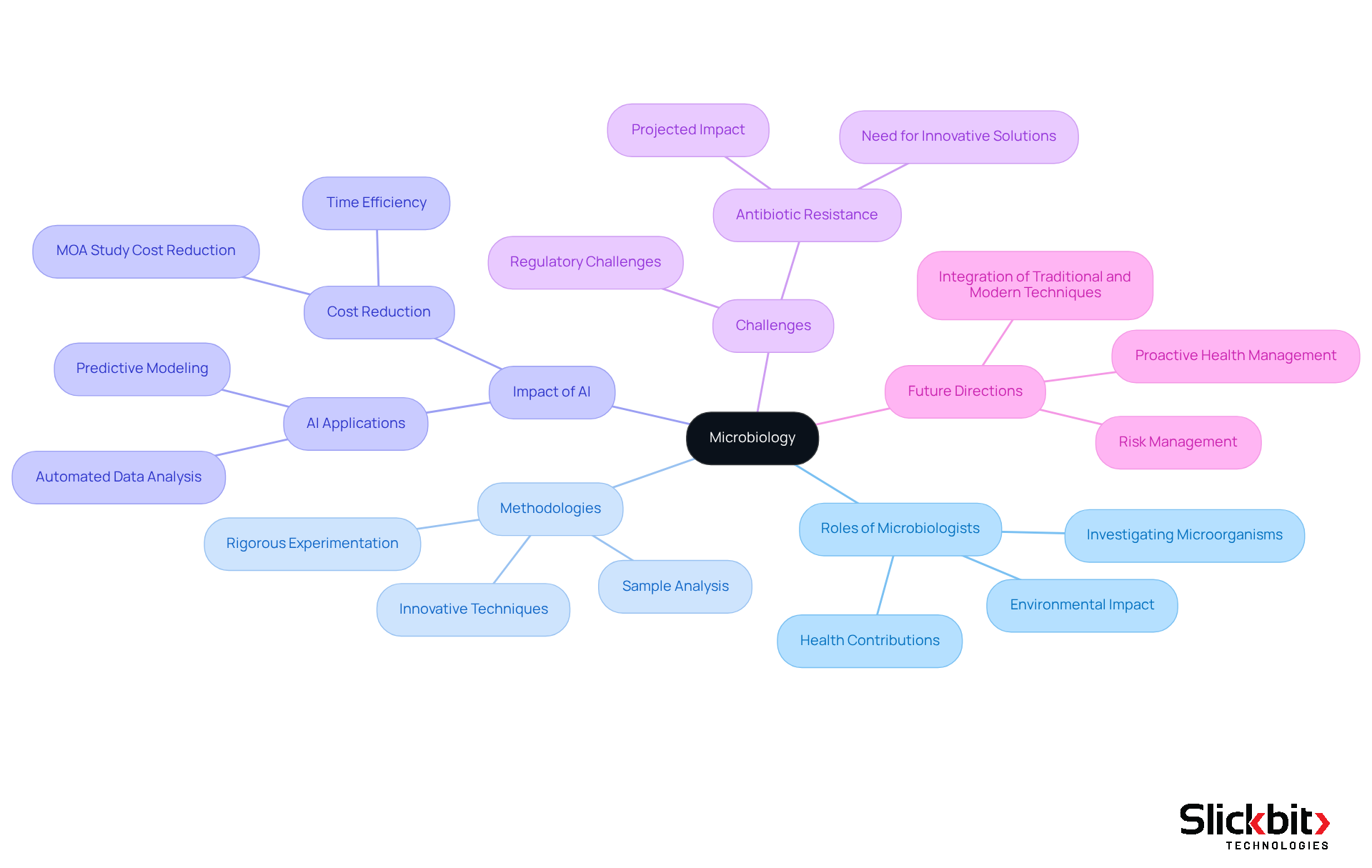
Pharmaceutical Sales Representative: Bridging Science and Sales
Pharmaceutical sales representatives are pivotal in educating healthcare professionals about new medications and medical devices, facilitating informed decisions that significantly enhance patient care. To thrive in this competitive field, representatives must possess robust communication skills and a comprehensive understanding of the products they promote. The integration of AI into sales strategies has revolutionized this role, empowering representatives to leverage analytics for identifying trends and tailoring their approaches.
For instance, sales professionals can utilize Slickbit's AI-powered Regulatory Intelligence to access precise, traceable answers from FDA and global guidance documents, ensuring they are well-informed about the products they represent. Furthermore, tools like Vault Redact automate the identification and removal of PII and PHI from documents, streamlining the documentation process and bolstering compliance. Slickbit's AI Summarizer and Voice Agent Solutions further enhance efficiency by providing quick insights and real-time shipment monitoring.
AI tools also automate repetitive tasks, such as expense reporting and order processing, freeing up time for representatives to engage more meaningfully with healthcare professionals. Notably, personalized recommendations from AI can improve sales by 5-15%, underscoring the quantifiable benefits of AI integration. This profession not only offers lucrative opportunities in careers for life sciences but also requires a continuous learning mindset to adapt to emerging technologies and market dynamics, making it ideal for those passionate about healthcare and sales.
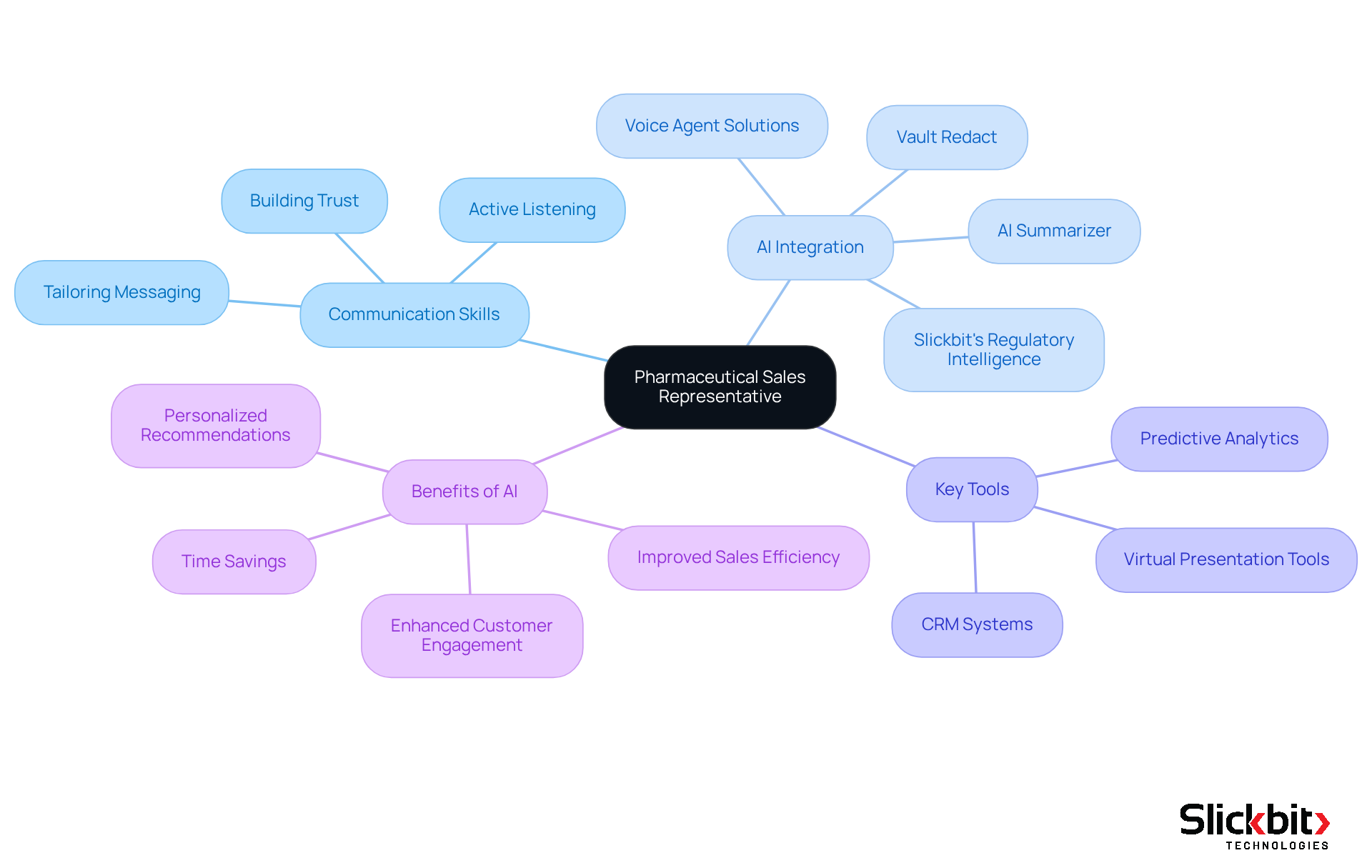
Chemical Engineer: Designing Processes for Chemical Production
Chemical engineers play a pivotal role in the design and optimization of processes for the production of chemicals, pharmaceuticals, and materials. By applying principles of chemistry, physics, and engineering, they ensure safety and efficiency throughout production. Furthermore, the integration of AI into chemical engineering has revolutionized process modeling and optimization, significantly enhancing production outcomes. For instance, platforms like CRESt utilize AI to explore over 900 chemistries and conduct thousands of electrochemical tests, leading to the discovery of innovative materials, including a catalyst that achieved a remarkable 9.3-fold increase in power density per dollar compared to traditional options.
AI's capabilities extend to predictive maintenance and quality control, where systems can analyze historical data to identify root causes of production issues, consequently reducing trial-and-error cycles by 57% to 61%. This proactive approach not only streamlines operations but also enhances product stability by 28%. As the chemical manufacturing sector contributes approximately $5.7 trillion annually to the global economy, the demand for skilled professionals who can leverage AI technologies is on the rise. Opportunities abound in various industries, including pharmaceuticals, energy, and materials science, making chemical engineering one of the most promising careers for life sciences.
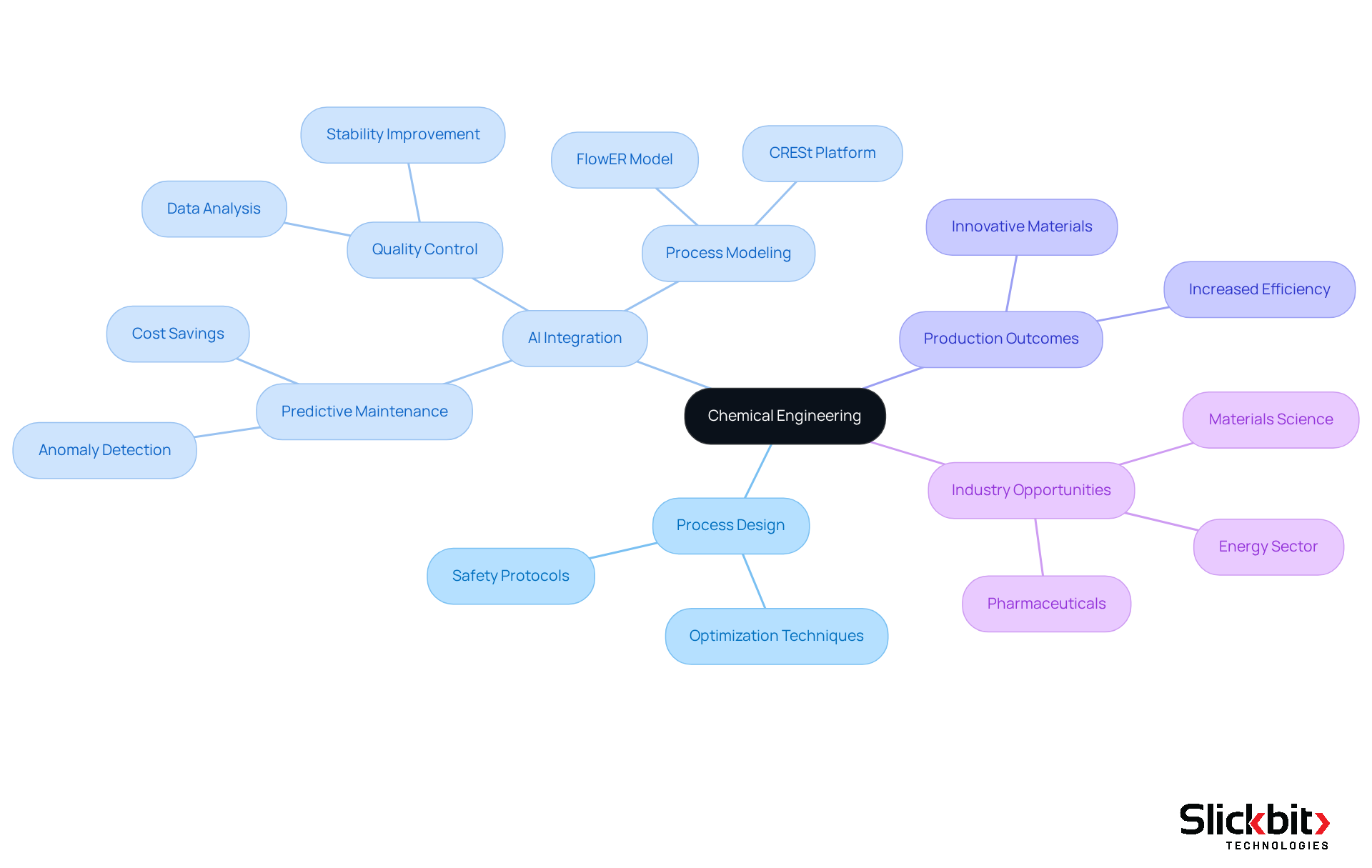
Veterinarian: Caring for Animal Health and Welfare
Veterinarians play a crucial role in diagnosing and treating illnesses in animals, providing essential care for pets, livestock, and wildlife. Their contributions extend beyond individual care, significantly enhancing community well-being through the monitoring of zoonotic diseases. Recent advancements in artificial intelligence (AI) have revolutionized veterinary practices, facilitating the use of sophisticated diagnostic tools and data analytics that improve patient outcomes.
For instance, AI algorithms can analyze complex datasets to identify subtle variations in wellness, leading to earlier interventions and more effective treatments. Notably, AI has the capability to predict chronic kidney disease in cats up to two years before its onset, showcasing its potential for proactive wellness management. Furthermore, AI-driven wellness monitors can track vital parameters, enabling timely medical responses.
However, the integration of AI is not without challenges; high initial costs and data privacy concerns must be carefully managed. This professional pathway provides careers for life sciences, offering a rewarding opportunity for those dedicated to animal health and welfare, positioning veterinarians at the forefront of technological advancement in their field, ultimately enhancing the quality of care for animals.
As Allie Aspen, a clinical solutions specialist, aptly stated, "AI is less a novelty than a support for over-stretched staff," underscoring the vital role of AI in alleviating workload pressures within veterinary settings.
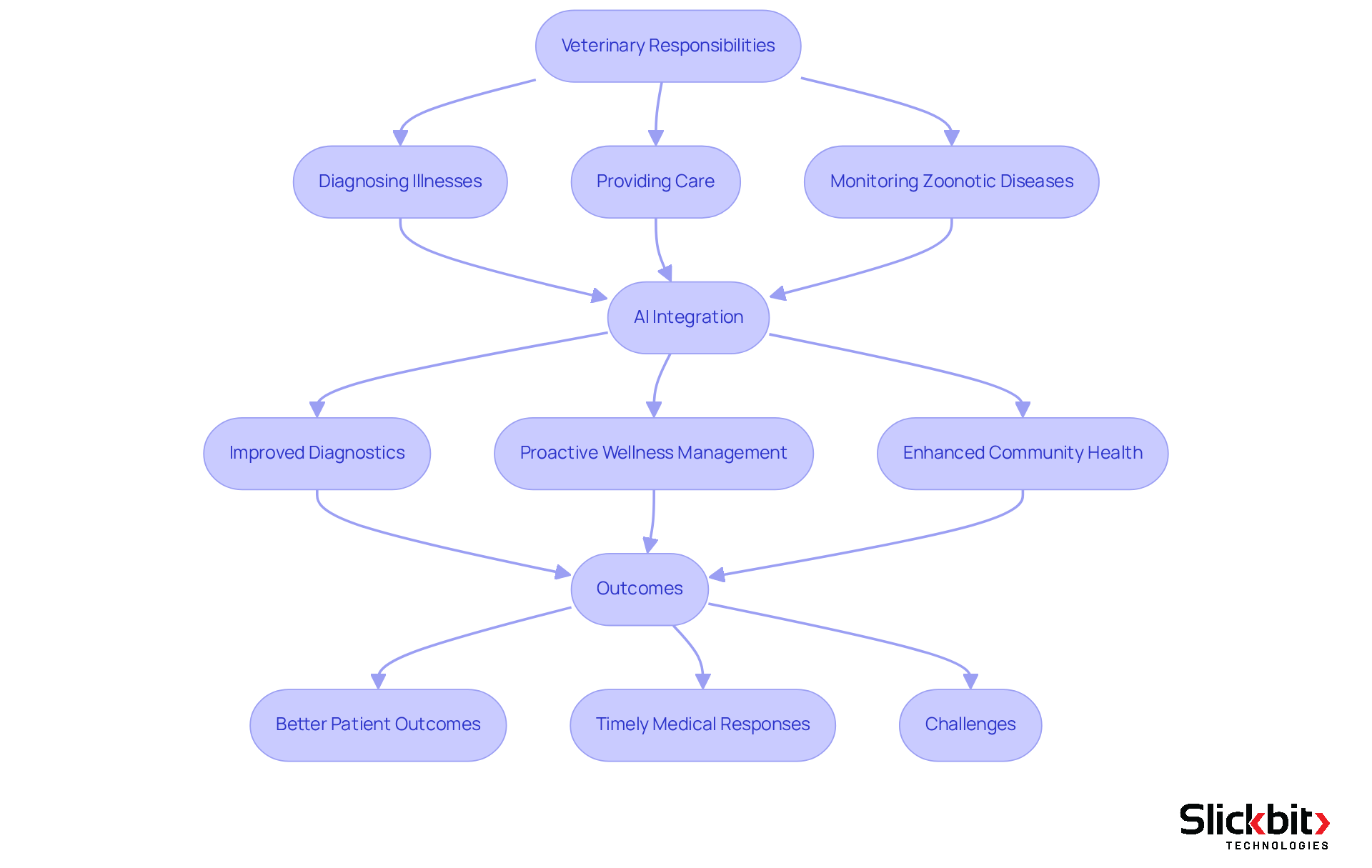
Science Teacher: Inspiring Future Scientists
Science teachers play a crucial role in educating students about scientific principles while fostering critical thinking and inquiry. This profession is instrumental in shaping students' understanding of the natural world, ultimately motivating their future pursuits in science. Furthermore, with the integration of technology in education, science teachers can leverage AI tools to enhance learning experiences, engaging students more effectively than ever before. This career not only offers the opportunity to make a lasting impact on students' lives but also significantly contributes to shaping careers for life sciences.
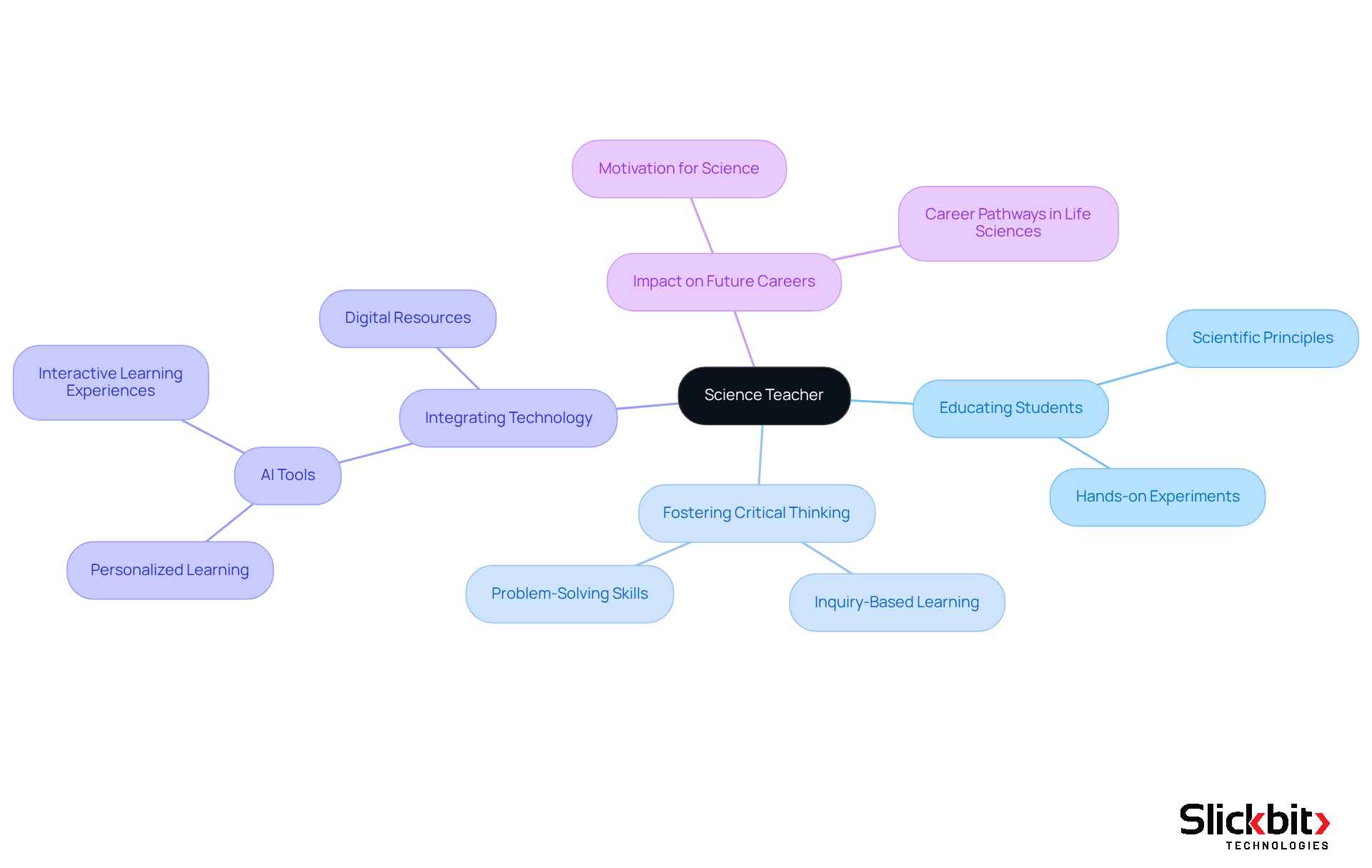
Biostatistician: Analyzing Data for Health Research
Biostatisticians play a crucial role in health investigations, utilizing advanced statistical techniques to analyze data from various studies. This analysis is essential for guiding public health decisions and medical practices. Employed across diverse environments—government agencies, healthcare organizations, and academic institutions—biostatisticians are at the forefront of health research.
Furthermore, the incorporation of AI into biostatistics has revolutionized analysis, enabling more sophisticated modeling methods that significantly enhance the precision and reliability of study results. For instance, AI tools are capable of analyzing complex datasets, predicting healthcare needs, and identifying patterns that inform personalized treatment strategies. Notably, an AI-based tool has been developed to predict kidney transplant rejection risks more accurately than traditional methods, showcasing the transformative impact of AI in this field.
As the demand for data-driven insights in healthcare continues to grow, with a projected job growth rate of 7% or higher for Statisticians from 2024 to 2034, careers for life sciences present numerous opportunities for individuals skilled in statistics and passionate about advancing health research.
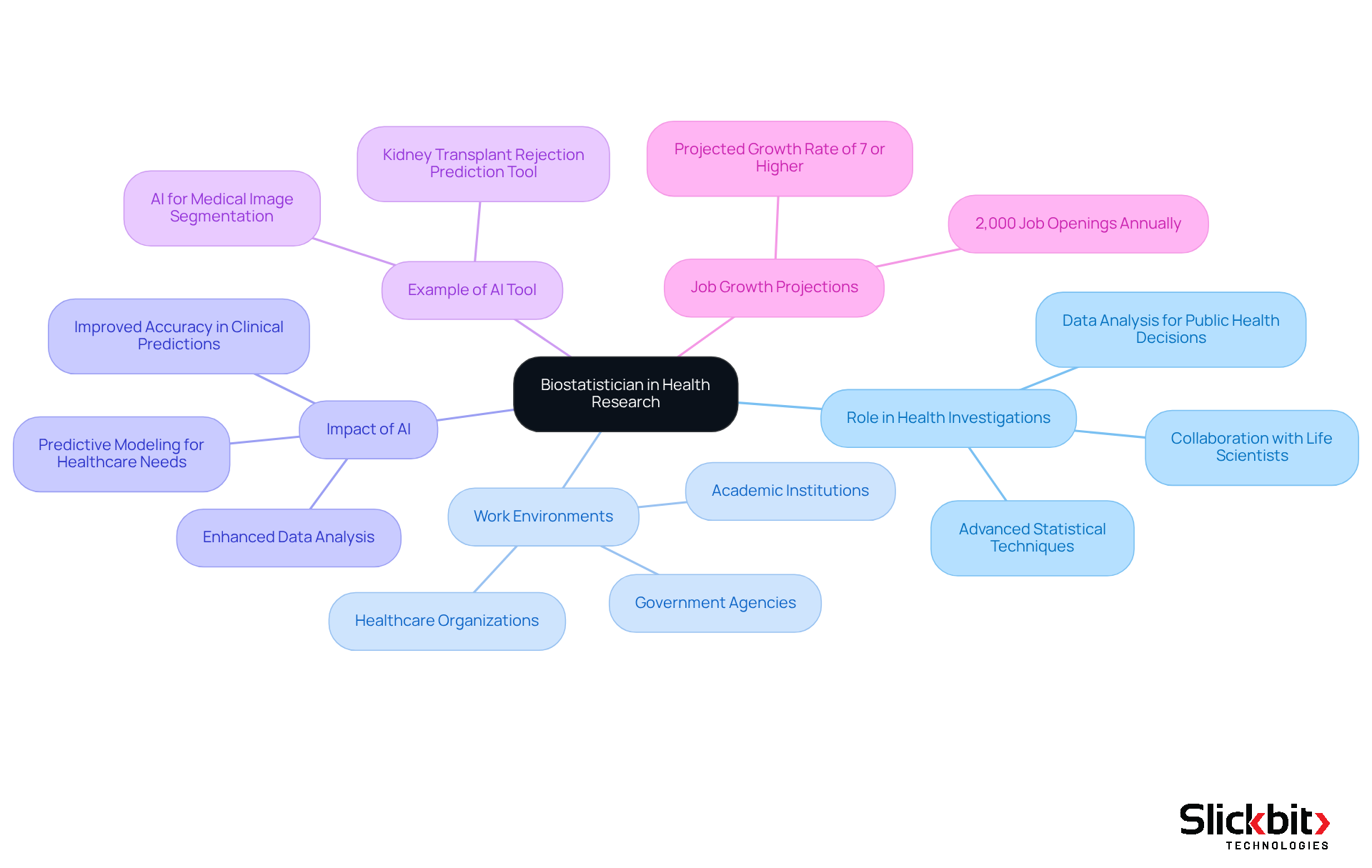
Neurologist: Diagnosing and Treating Nervous System Disorders
Neurologists are pivotal in the diagnosis and treatment of disorders affecting the brain, spinal cord, and nerves. They conduct thorough examinations, order diagnostic tests, and develop treatment plans for conditions such as epilepsy, stroke, and neurodegenerative diseases. Recent advancements in artificial intelligence are revolutionizing this field, empowering neurologists to utilize predictive analytics and advanced imaging technologies to significantly enhance diagnostic accuracy and treatment outcomes.
For example, AI tools can analyze intricate medical images to identify abnormalities that may escape the human eye, facilitating earlier and more precise diagnoses. Furthermore, AI-driven predictive models can help identify patients at high risk for developing conditions like Alzheimer's disease, enabling timely interventions based on genetics, family history, and other relevant data.
This career not only provides the opportunity to profoundly impact patients' lives but also represents one of the most important careers for life sciences, placing neurologists at the forefront of integrating cutting-edge technology into healthcare.
As Bijoy Kundu, PhD, from UVA Cancer Center states, "Our goal is to give doctors better tools, so they can focus less on guesswork and more on care.
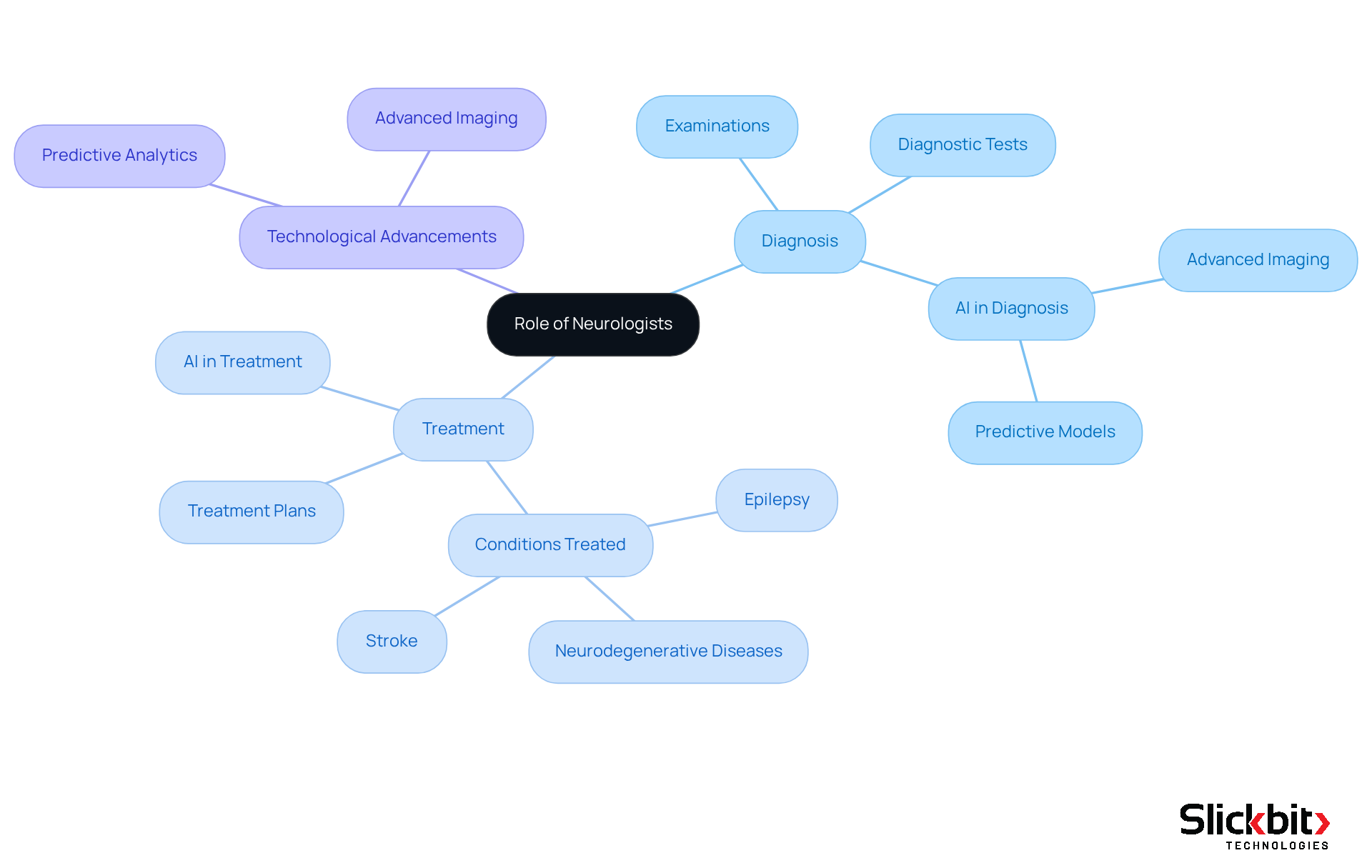
Marine Biologist: Researching Ocean Ecosystems
Marine biologists play a crucial role in investigating the behavior, physiology, and ecology of marine organisms, significantly advancing our understanding of ocean ecosystems. Their research not only supports vital conservation initiatives but also encourages sustainable practices that are essential for the health of our oceans.
Furthermore, the incorporation of artificial intelligence (AI) into marine biology enhances information collection and analysis, leading to improved study outcomes and more efficient conservation strategies. For example, researchers at Rutgers University-New Brunswick have developed an AI tool that predicts the habitats of endangered North Atlantic right whales, effectively guiding ships to avoid these vulnerable species.
Additionally, machine learning models analyze historical data to create 'probability maps' that indicate where and when whales are likely to be found, thereby aiding in conservation efforts. With approximately 370 North Atlantic right whales remaining, the urgency of these efforts is unmistakable.
This professional path, which includes careers for life sciences, offers varied opportunities in research, education, and environmental advocacy, making it essential for individuals dedicated to safeguarding our oceans.
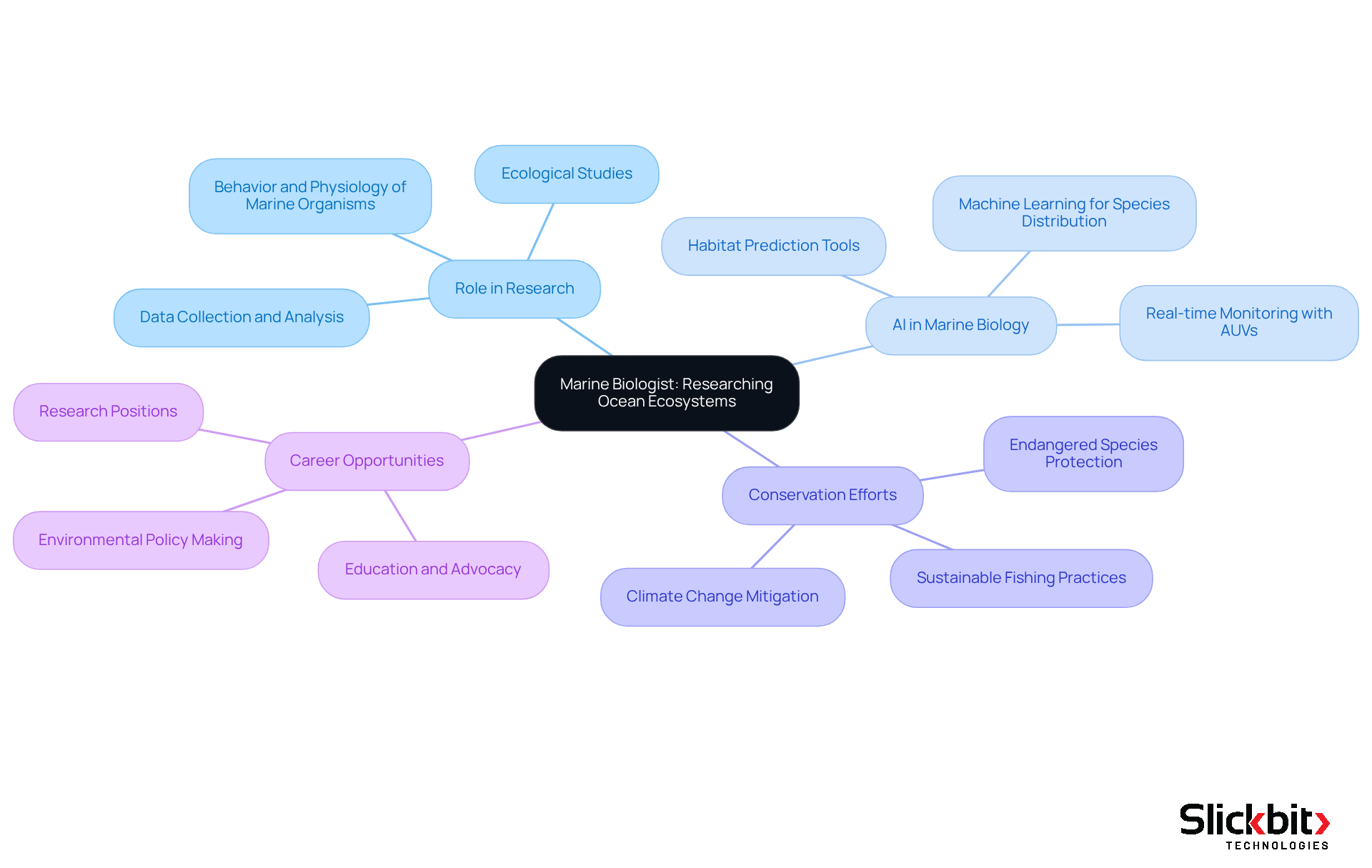
Personal Trainer: Promoting Health and Fitness
Personal trainers play a crucial role in crafting tailored fitness strategies that empower clients to achieve their wellness goals. They assess individual fitness levels, design personalized workout programs, and monitor progress, providing vital guidance and motivation. Furthermore, the integration of AI-driven tools is revolutionizing this profession, enabling trainers to enhance their programs with real-time feedback and personalized insights. For instance, AI applications can dynamically adjust workout parameters based on user performance, ensuring that clients receive optimal training tailored to their specific needs.
However, skepticism persists regarding generic AI-driven fitness programs. Industry experts like Marshall Weber caution that such programs can foster bad habits and set unrealistic training goals. Despite these concerns, the technological advancement of AI not only enhances training effectiveness but also allows trainers to focus on nurturing client relationships and accountability. Statistics reveal that 66% of users turn to fitness apps for motivation, underscoring the significant role of AI in enriching training experiences.
As the fitness industry increasingly embraces AI, personal trainers are uniquely positioned to leverage these tools, creating more engaging and effective training experiences that ultimately make a profound positive impact on their clients' lives. A notable example is Oxe-Fit, an AI-driven digital trainer utilized at Zero Training Center, which dynamically adjusts weights according to user performance. This professional path offers adaptability and the rewarding opportunity to enhance individuals' well-being in a rapidly changing environment.
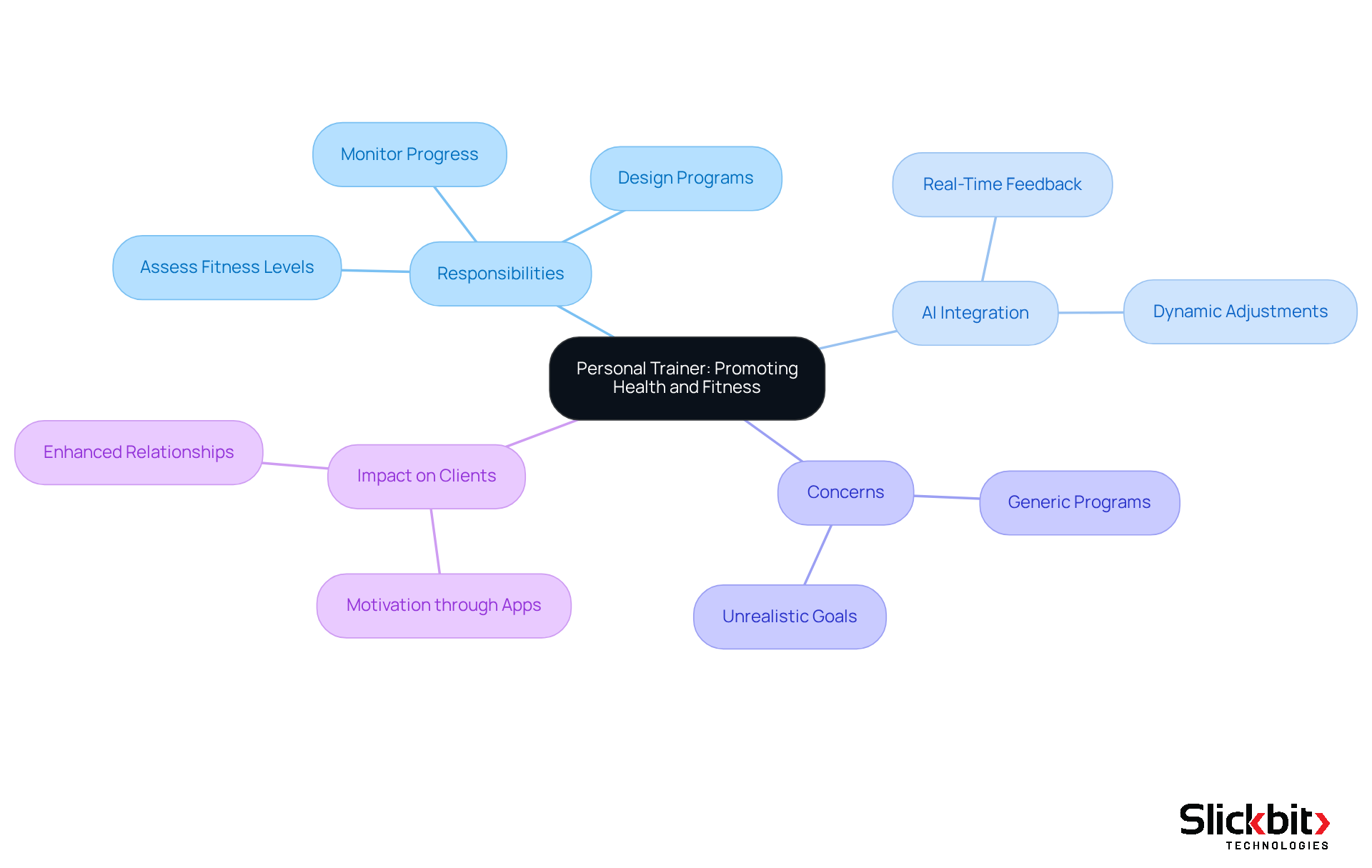
Nutritionist: Advising on Healthy Eating Practices
Nutritionists play a crucial role in guiding individuals toward their wellness objectives through informed dietary selections and nutritious eating habits. They meticulously assess clients' nutritional needs, develop tailored meal plans, and educate them on the significance of balanced diets. Furthermore, with the advent of advanced technology, nutritionists can now leverage AI tools to analyze dietary patterns, providing personalized recommendations that cater to individual requirements. Careers for life sciences not only allow for professional growth but also offer the profound opportunity to make a meaningful impact on the health and well-being of individuals.
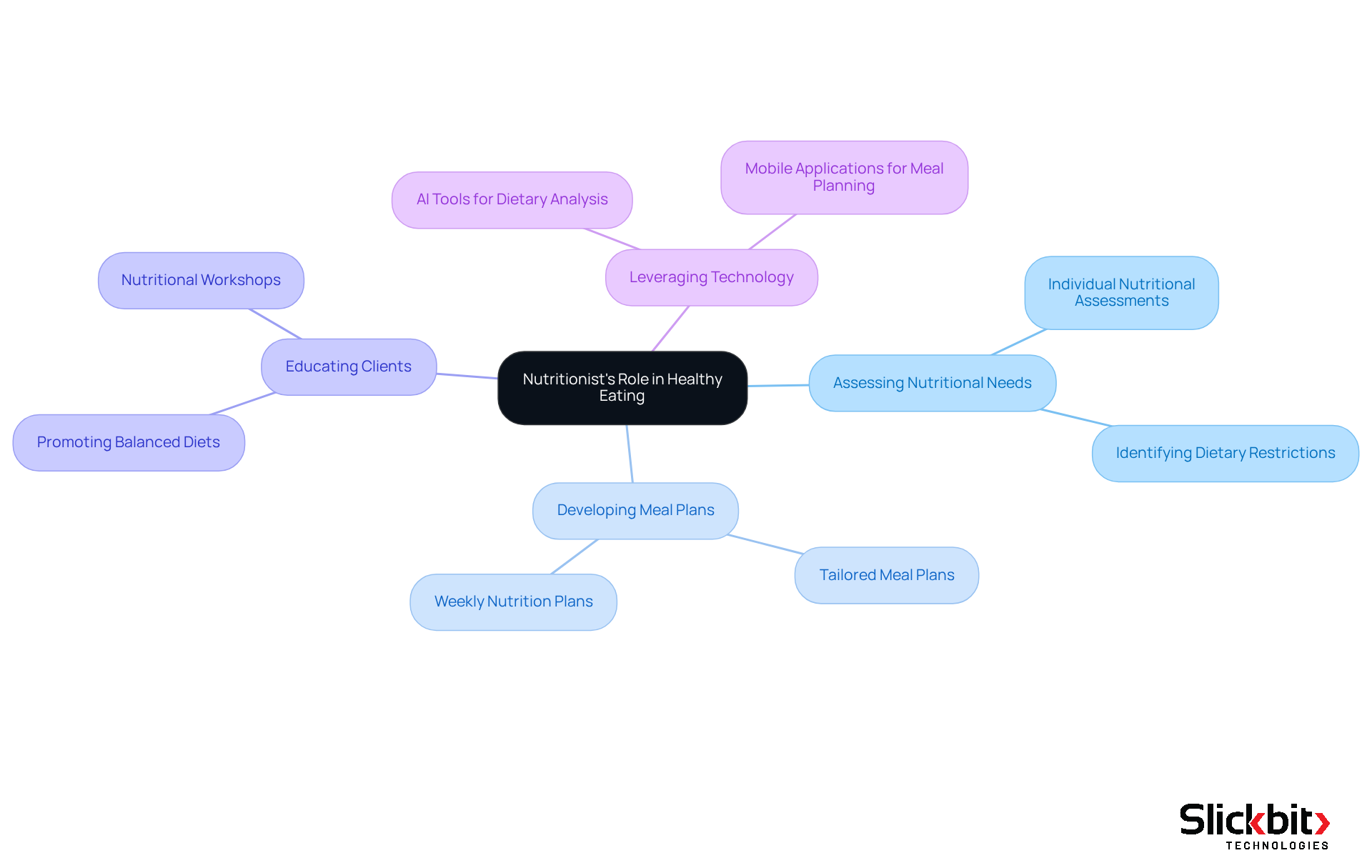
Conclusion
The landscape of careers within the life sciences is not only diverse but also increasingly shaped by technological advancements, particularly artificial intelligence. Throughout this article, it has been demonstrated how various professions—such as biomedical engineers, wildlife biologists, and epidemiologists—are harnessing AI to boost their productivity and effectiveness. This integration ultimately drives innovation and enhances outcomes across their respective fields.
Key insights underscore the transformative role of AI in streamlining workflows, improving data analysis, and fostering collaboration across disciplines. From the precision of medical diagnostics to the efficiency of conservation efforts, technology's integration is reshaping traditional practices and creating exciting opportunities for professionals dedicated to advancing health, environmental sustainability, and scientific inquiry.
As the demand for skilled individuals in life sciences continues to rise, embracing these technological advancements is essential for career growth. The future is indeed promising for those who are willing to adapt and innovate, making this an opportune moment for aspiring professionals to explore the myriad possibilities within this dynamic sector. Whether through the direct application of AI tools or by contributing to groundbreaking research, the impact of life sciences careers extends far beyond individual roles, shaping a healthier and more sustainable world for all.
Frequently Asked Questions
What solutions does Slickbit.ai provide for life sciences professionals?
Slickbit.ai delivers AI solutions that enhance productivity and workflows for life sciences professionals by utilizing predictive analytics and natural language processing to streamline processes, improve compliance, and foster innovation.
How do AI agents benefit regulatory workflows in life sciences?
AI agents tailored for regulatory workflows can significantly reduce the time spent on compliance tasks, allowing professionals to focus on strategic initiatives that support their career advancement.
What role do biomedical engineers play in healthcare?
Biomedical engineers design and develop medical devices, prosthetics, and diagnostic equipment that enhance patient care, applying principles of engineering and biology to create innovative healthcare solutions.
How has AI transformed the biomedical engineering field?
AI has improved the functionality of medical devices by enabling real-time data analysis and enhanced patient monitoring, exemplified by AI-powered wearables like the Embrace2 smartwatch, which achieved 100% detection accuracy in clinical trials.
What are the job prospects for biomedical engineers?
The biomedical engineering sector is expected to grow by 5% from 2024 to 2034, with around 1,300 job openings anticipated each year due to increasing demand for advanced medical technologies.
What is the median annual wage for biomedical engineers?
As of May 2024, the median annual wage for bioengineers and biomedical engineers was reported as $106,950.
What is the role of wildlife biologists?
Wildlife biologists study animals and their habitats, focusing on conservation initiatives to protect endangered species and preserve ecosystems through field research and data analysis.
How has technology impacted wildlife biology?
Advances in AI and remote sensing have revolutionized wildlife biology, allowing for more efficient data collection and analysis, such as monitoring endangered shark populations through real-time data conversion.
What are the environmental considerations for wildlife biologists using AI?
Wildlife biologists must be aware of the environmental impact of AI technologies and ensure transparency regarding these costs while partnering with technology experts to optimize conservation efforts.
What is the primary function of epidemiologists?
Epidemiologists analyze disease patterns and causes to reduce risks and improve public health outcomes by examining data from various sources to inform wellness policies and interventions.
How does AI enhance the work of epidemiologists?
AI significantly amplifies data analysis capabilities, enabling rapid responses to medical threats and facilitating the detection of previously undetectable disease markers.
What is the expected job growth for epidemiologists?
Employment for epidemiologists is projected to increase by 16 percent from 2024 to 2034, indicating a strong demand for professionals in this field.
What is the median annual wage for epidemiologists?
As of May 2024, the median annual wage for epidemiologists in scientific research and development services was reported as $130,390.
What is the role of medical technologists in healthcare?
Medical technologists conduct laboratory tests essential for diagnosing and treating diseases, analyzing bodily fluids to provide precise results.
How is AI impacting the field of medical technology?
The integration of AI into medical technology workflows enhances testing accuracy and efficiency, allowing for faster diagnoses and improved patient outcomes.
What is the job outlook for medical technologists?
Employment for medical technologists is projected to grow by 14 to 18 percent over the next decade, driven by staffing shortages in laboratory fields, resulting in higher pay and better job options.




